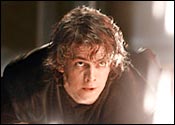 The law of diminishing returns has not worked for the sixth and final Star Wars movie, Episode III Revenge Of The Sith. It is a livelier piece of work than the preceding two movies in the series, Attack Of the Clones (2002) and The Phantom Menace (1991).
The law of diminishing returns has not worked for the sixth and final Star Wars movie, Episode III Revenge Of The Sith. It is a livelier piece of work than the preceding two movies in the series, Attack Of the Clones (2002) and The Phantom Menace (1991).
George Lucas' epic galactic saga comes to an end -- 28 years after it stunned the world with its visuals and daring concepts -- with a thrilling, eye-popping and reasonably well-acted movie. Given the film's twists and turns, soaring action scenes, and closeness to the first movie in the series, repeat audiences are assured. This is entertainment of a very high order.
It will be quite a task for any movie this year to match the grandeur and excitement of this opus that may also become the most successful of the prequels, earning about $1 billion worldwide. The previous Star Wars episode grossed about $850 million.
![]()
More on rediff.com!
![]()
![]()
![]()
![]()
Star Wars Special: Anakin to Yoda![]()
Show off your Star Wars knowledge![]()
The Star Wars quiz![]()
![]()
![]()
The pleasure of seeing the new film will be enhanced if the previous installments are viewed before heading to the nearest multiplex.
In 1975, millions of moviegoers across the world realised the joy of watching a film in a packed theatre when they caught Steven Spielberg's Jaws. When the shark appeared for the first time on the big screen, there was a collective gasp. The fact that there were hundreds of people around us who were also scared made our own fear even more intense.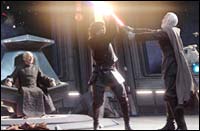 When Anakin Skywalker takes his first breath as Darth Vader in Revenge Of The Sith, there is an electrifying silence in the theatre.
When Anakin Skywalker takes his first breath as Darth Vader in Revenge Of The Sith, there is an electrifying silence in the theatre.
Critics, who saw the film along with a few hundred invited audiences a few weeks ago, might learn a thing or two of the joy of movie-going if they were to see the film again with the audiences.
Despite the computer-generated technology, one gets the feeling of watching an old-fashioned film because the battle scenes and the sumptuous sets are splendidly created.
Much of the film is preoccupied with the young Anakin Skywalker (Hayden Christen) wavering between good and evil, and finally choosing his dark destiny.
The politically inclined, especially those towards the Left, will get some kick hearing about the evil of consolidating power and browbeating others into submission. 'This is how democracy dies,' declares senator Padme (Natalie Portman) when Palatine, one of the more intriguing characters in the film, manipulates the senators to get full powers.
Christen is impressive in the scene when he is christened Darth Vader after he decides to swear his allegiance to Chancellor Palpatine. But Ian McDiarmid is so formidable as Palpatine that he unwittingly makes Christen's performance less effective.
The film also sees formidable actors such as Ewan McGregor, who plays Obi-Wan Kenobi, and Christopher Lee as Count Dooku. The confrontation between Anakin and Obi-Wan produce thrilling scenes.
But Lucas attracts the best work from Yoda (voiced by Frank Oz), the Jedi master who is certainly one of the most interesting and intriguing characters in the film.
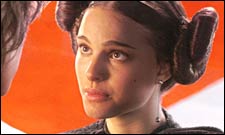 While the subsidiary characters portrayed by the likes of McDiarmid leave a terrific impression, Natalie Portman as Padme, certainly one of the more complex characters in the film, is comparatively dull.
While the subsidiary characters portrayed by the likes of McDiarmid leave a terrific impression, Natalie Portman as Padme, certainly one of the more complex characters in the film, is comparatively dull.
The love scenes between Padme and Anakin are awkwardly staged and have some terrible lines. That is perhaps because Lucas is so preoccupied in constructing the scenes, piling up special effects and connecting the film to the other episodes that he has not paid adequate attention to the written word and performances.
But he has redeemed himself superbly with the new movie, after the less than thrilling two films preceding it. The special effects, we feel for once, are at the service of the film's plot and story development. The smart editing has given the film far more coherence than its predecessors.
This is perhaps the second most entertaining, opulent and gripping of all the six Star Wars films, the 1980 landmark The Empire Strikes Back -- directed by Irvin Kershner -- being the best.



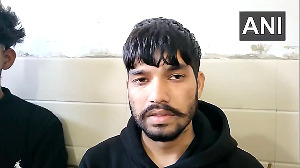

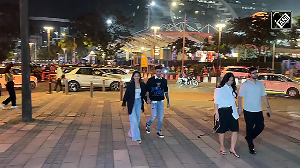
 © 2025
© 2025